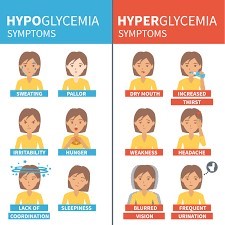A school nurse is notified of an emergency in which several children were injured following the collapse of playground equipment. Upon arrival at the playground, which of the following actions should the nurse take first?
Instruct a staff member to maintain a log of emergency care provided.
Apply cervical spine collars to children who have suspected neck trauma.
Notify guardians of the emergency and injuries to their children.
Survey the scene for potential hazards to staff and children.
The Correct Answer is D
A. Instructing a staff member to maintain a log of emergency care provided is not the first action that the nurse should take. This is an important task, but it can be done later, after ensuring the safety of the staff and children and providing immediate care to those who need it.
B. Applying cervical spine collars to children who have suspected neck trauma is not the first action that the nurse should take. This is a priority intervention, but it can only be done after surveying the scene for potential hazards and making sure that it is safe to approach and touch the children.
C. Notifying guardians of the emergency and injuries to their children is not the first action that the nurse should take. This is a necessary step, but it can be delegated to another staff member or done after providing initial care to the children.
D. Surveying the scene for potential hazards to staff and children is the correct answer. This is the first action that the nurse should take, according to the principles of emergency care. The nurse needs to assess the situation and ensure that there are no dangers such as fire, electricity, gas, or falling debris that could harm anyone at the scene. The nurse also needs to determine how many children are injured, how severe their injuries are, and what resources are available to help them.
Nursing Test Bank
Naxlex Comprehensive Predictor Exams
Related Questions
Correct Answer is A
Explanation
Irritability.

The rationale for each choice is as follows:
- A. Irritability: Correct. Irritability is one of the signs of hypoglycemia, which occurs when blood glucose levels fall below 70 mg/dL (3.9 mmol/L). Other signs include shakiness, sweating, hunger, headache, confusion, and blurred vision.
- B. Increased urination: Incorrect. Increased urination is one of the signs of hyperglycemia, which occurs when blood glucose levels rise above 180 mg/dL (10 mmol/L). Other signs include thirst, dry mouth, fatigue, nausea, and fruity breath odor.
- C. Vomiting: Incorrect. Vomiting is not a specific sign of hypoglycemia or hyperglycemia, but it can occur as a complication of either condition if left untreated or poorly managed.
- D.Facial flushing: Incorrect. Facial flushing is not a sign of hypoglycemia or hyperglycemia, but it can occur as a side effect of some medications used to treat diabetes, such as niacin or rosiglitazone.
Correct Answer is C
Explanation
Choice A rationale:
Limiting fluid intake to 1 liter per day can lead to dehydration and other health complications. It is important for the client to maintain adequate hydration, especially postpartum. This option is incorrect and potentially harmful.
Choice B rationale:
Manual expression of milk can help relieve engorgement without stimulating further milk production. This method allows the client to express milk as needed. However, it can be done even before engorgment occurs
Choice C rationale:
Wearing a snug-fitting bra can provide support and comfort.
Choice D rationale:
Applying moist heat to the breasts can stimulate milk production and relieve engorgement. However, in this case, the client wants to suppress lactation. Therefore, this option is not appropriate and may have the opposite effect of increasing milk production.
Whether you are a student looking to ace your exams or a practicing nurse seeking to enhance your expertise , our nursing education contents will empower you with the confidence and competence to make a difference in the lives of patients and become a respected leader in the healthcare field.
Visit Naxlex, invest in your future and unlock endless possibilities with our unparalleled nursing education contents today
Report Wrong Answer on the Current Question
Do you disagree with the answer? If yes, what is your expected answer? Explain.
Kindly be descriptive with the issue you are facing.
